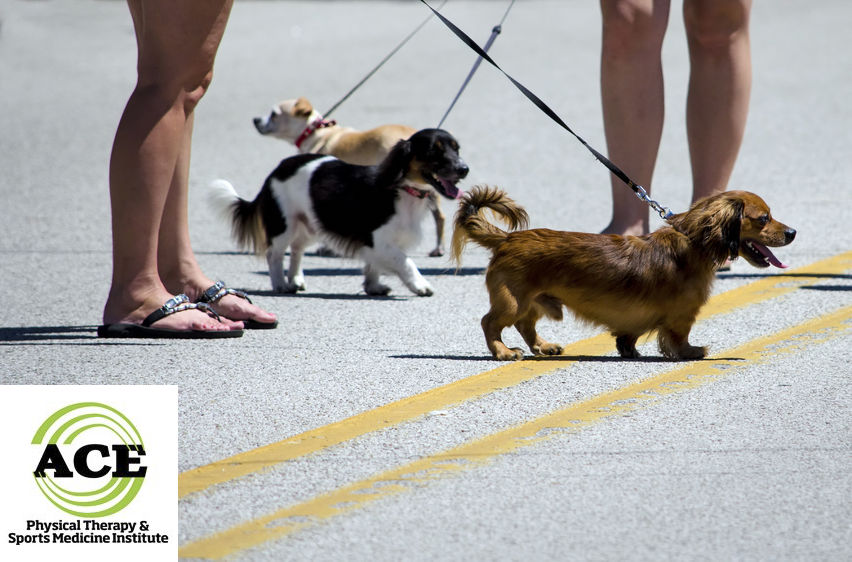FLIP FLOPS AND INJURIES
Flip Flops and Injuries
by ACE Physical Therapy and Sports Medicine Institute
Tid Bits of Info.
- Flip flops should be fitted to your foot. Proper size will provide some protection for the foot.
- Leather flip flops and ones with a strap around the heel will provide a better fit.
- Approximately 78% of all people who wear flip flops complain of foot pain.
- Lack of arch support and loose fitting flip flops can lead to painful body parts extending from the low back to the toes.
- If you experience pain from wearing flip flops, seek the advice and treatment from a Physical Therapist without seeing your doctor first.
Nowadays, people wear flip flops in almost all settings and all weather conditions: the workplace, the outdoors, the home and everywhere in between. Listen and you’ll hear the characteristic flip flop sound as wearers walk by. Comfort, convenience, and style drive the popularity of this simple footwear. Unfortunately, wearing flips flops too often can lead to injuries and pain from throughout the body.
The problem with most flip flops is the simple fact that there is little to no support of the foot and ankle when someone is walking in them. This lack of support to the foot and ankle can lead to a host of lower extremity injuries and painful body parts.
Consider your daily walking habits. While we walk, most of us hardly think twice about walking. If we walk close to the recommended 8 to 10 thousand strides per day, then each foot is hitting the ground between 4 to 5 thousand times per day. Each step requires the foot to carry the entire body weight. If we walk faster or run, the amount of force that is put through the foot, ankle and lower extremity increases significantly. It has been said that during a jog and or sprint the lower extremity can be forced to withstand between 3-7 times the runner’s body weight. Fortunately most people do not run in flip flops, but if they walk fast to get somewhere or to make an appointment, they are subjecting their legs to an increased amount of force.
Normal gait requires the heel to strike the ground first and as the person moves forward the body weight is accepted and supported in the foot by the lateral (little toe side) of the foot. The body weight is transitioned across the foot and the toes make contact and foot goes “flat” in the middle or mid stance phase. This “flattening” of the foot and its arches is a way the foot and ankle complex absorbs the weight of the body. During the final phase the heel is lifted off of the ground and the foot is pushing the body forward via the big toe or medial side of the foot.
If we compare this gait cycle in “normal” shoes with the gait cycle in flip flops, we’ll discover different patterns. One study found that a person wearing flip flops actually takes shorter strides and turns the ankle inward. People wearing flip flops have to flex or curl their toes excessively to make sure the flip flop stays on their foot and they tend to flex their ankle in an upward direction (dorsiflexion) more than when they wear a shoe. All of these changes in the “normal” gait cycle can lead to a painful body part.
Most commonly injured body parts are the heel and toes. The lack of support puts excessive stress and strain on the muscles and the static stabilizers (ligaments and fascia) of the foot and its arches. The plantar fascia is a big band of leather-like tissue that attaches to the heel bone (calcaneus) and extends the length of the foot and inserts into the tendons of the toes that flex them. When the arches “flatten” to absorb the weight, the plantar fascia is stretched to its maximum. A good supportive shoe limits the extent of the “flattening” out process but a flip flop does not. This can lead to a painful condition of plantar fasciitis.
The lack of support can lead to pain and injuries to other body parts throughout the low back and leg. The knee often times will experiences pain in the front or lateral aspect, the hip can begin to hurt on the lateral aspect and finally the low back can tighten up and make is difficult to perform almost any activity.
The lack of cushion on the heel of the flip flop can lead to impact injuries to heel. The heel strikes the ground first when someone is walking. The impact of the body weight landing on the heel without proper cushioning can lead to contusions and stress reactions and/or fractures.
If injuries do occur following the use of flip flops, seek the advice and treatment from a Physical Therapist. You do not have to go to your doctor first, and the Physical Therapist is a licensed healthcare professional that can determine a diagnosis and formulate a treatment protocol that will address the symptoms and fix the problem.
Flip flops are worn by many and are comfortable and fashionable, but they can cause pain to occur if they are worn in excess. There is no definitive amount of time that these can or should be worn, but it is safe to say that their lack of support and cushion can lead to a host of lower extremity injuries if they are worn too long.
Read more articles on our main website blog at: ACE-pt.org/blog
Vist our main website at www.ACE-pt.org


